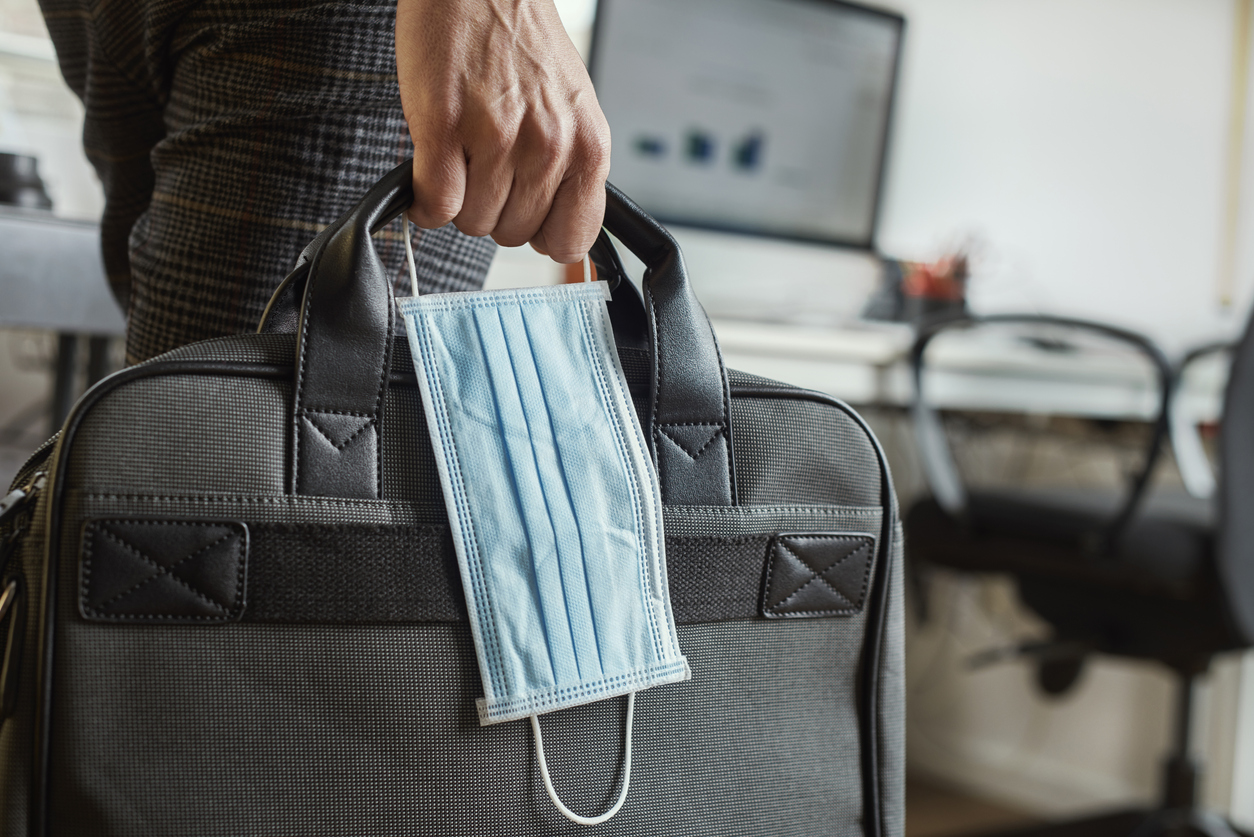The COVID-19 pandemic has caused employers to adjust day-to-day operations time and time again. That trend continues after President Joe Biden announced a vaccination mandate on Sept. 9, 2021.
Biden’s executive order is designed to address the ongoing pandemic through new policies that are designed to slow the spread of COVID-19 and the Delta variant. Many of these policies will directly impact employers of all sizes and require them to prepare accordingly now that the Occupational Safety and Health Administration (OSHA) issued an emergency temporary standard (ETS) November 4th, 2021.
So what does the vaccine mandate mean for businesses across the country? Let’s break down what employers need to know about the new vaccine mandate and how it impacts their day-to-day operations.
What Employers Are Covered By The New Vaccine Mandate?
The vaccine mandate does not apply to every employee in the United States. Instead, there are three main groups that are impacted by the mandate:
- All federal staff and employees of government contractors and subcontractors.
- Medicare and Medicaid workers and any other care providers that receive Medicare or Medicaid reimbursement.
- Private-sector employers with more than 100 employees.
For the majority of business owners, the last group is the relevant of the three and covers approximately 84 million employees. The executive order mandates that any on-site employees of businesses with more than 100 employees must meet one of two obligations:
- Provide proof of vaccination.
- Undergo weekly tests for COVID-19 if unvaccinated.
When Does The Vaccine Mandate Go Into Effect?
The ETS sets a specific timeline for the businesses covered by the mandate. Any private-sector employer with more than 100 employees must choose between full vaccination or weekly testing by December 5th, 2021, which is 30 days following the ETS’ publication in the Federal Register.
These businesses must then implement that rule by January 4th, 2022, which means that employees must receive the necessary shots to be fully vaccinated by that date. Any unvaccinated will be required to provide verified negative tests for their employer at least once a week. In addition, employers have a responsibility to ensure that unvaccinated employees wear a face mask while on site.
How Does The Vaccine Mandate Impact Employers With Fewer Than 100 Employees?
As it stands, the mandate does not apply to any businesses with fewer than 100 employees. These organizations can still opt to require vaccinations or forego any type of mandate. OSHA also announced that it will use a company’s total headcount for the mandate. As such, the number of employees at different worksites will be added together to see whether an organization meets the 100-employee threshold.
How Does The Mandate Impact Part-Time, Remote, Or Other Types Of Employees?
The vaccine mandate applies to any employees who work in the office, facility, or any other type of jobsite where they could interact with co-workers. That distinction means that any employees who are completely remote wouldn’t be subject to the vaccine mandate. Employers do have the option to extend the vaccination requirement to remote employees as well if they so choose.
While the mandate impacts the vaccination or testing status of on-site employees, employers should still individually count every worker toward the threshold. That means that organizations should include the following people toward their total base of employees:
- Remote employees
- Full-time employees
- Part-time employees
- Temporary workers
The mandate does provide a couple of exemptions that do not count toward the threshold. As it stands, any independent contractors and “leased” employees are not counted toward the mandate.
How Should Employers Handle Employees With Medical, Religious, And Other Exemptions?
Simply put, navigating vaccination exemptions and accommodations isn’t always an easy task. However, there are some steps that employers should take to handle employees that require vaccine exemption.
To start, employers can ask for objective documentation that supports any medical or disability exemptions. Handling religious exemptions is a more complicated process. According to the Equal Employment Opportunity Commission (EEOC), employers should assume that any requests for religious accommodation are based on sincere religious beliefs.
The caveat to that assumption is that employers may request additional information from an employee if they have any objective evidence that questions or disproves the sincerity of any beliefs. Employers may also ask for more detail if an employee’s basis for exemption is simply that their religion doesn’t permit vaccination.
Do Employers Need To Pay For COVID-19 Testing?
In general, the ETS does not require employers to provide or pay for tests. An exception to this standard is whether the employer in question is subject to any other applicable laws or collective bargaining agreements. However, employers must provide paid-time for employees to get vaccinated. Employees should also be granted sick leave if they need to recover from any side effects that prevent them from working.
How Should Employers Record Vaccination Information and Handle Employee Vaccination Status?
There are a variety of ways that employers can capture and verify vaccine status. These can include a letter from a healthcare provider, copies of vaccine cards, and other forms of proof.
It’s essential that employers be discreet about any employee vaccination information. Vaccination status is confidential medical information and should not be shared with any co-workers, supervisors, or other individuals who don’t need to know. As such, it’s best practice to securely store vaccination records separate from other employee information and limit access to only those on a need-to-know basis.
What Steps Can Employers Take To Prepare For Vaccine Mandates?
While the vaccine mandate only applies to private businesses with more than 100 employees, organizations of all sizes can prepare their businesses for the new requirements. This preparation will help employers be ready for the mandate, whether they must follow the vaccine mandate or choose to enforce it.
- Survey employees for vaccination status – Identify which employees are vaccinated, which ones will require testing, and which will require other accommodations and planning.
- Research testing options – Plan ahead to determine the best testing approach for your business, which can include considerations for onsite or nearby testing locations and which tests comply with the ETS.
- Create a written policy – Document your employees’ requirements to follow the vaccine mandate, including procedural requirements, employees’ options, and the consequences for noncompliance.
- Communicate with employees – Share information about the vaccine mandate and your business’ compliance plan as early as possible. Early action will not only help build trust with employees, but also provide both parties with time to respond to employee feedback and plan for any employees who choose to depart due to the mandate.
Another step that businesses can take is to not face the vaccine mandate and other legislation alone. GMS partners with businesses to take on time-consuming administrative burdens and guide them through difficult decisions, including how to handle the White House’s vaccine mandate.
Ready to navigate through increased compliance requirements and other critical decisions that will affect the future of your business? Contact GMS now to talk with our experts about how we can make your business simpler, safer, and stronger.




